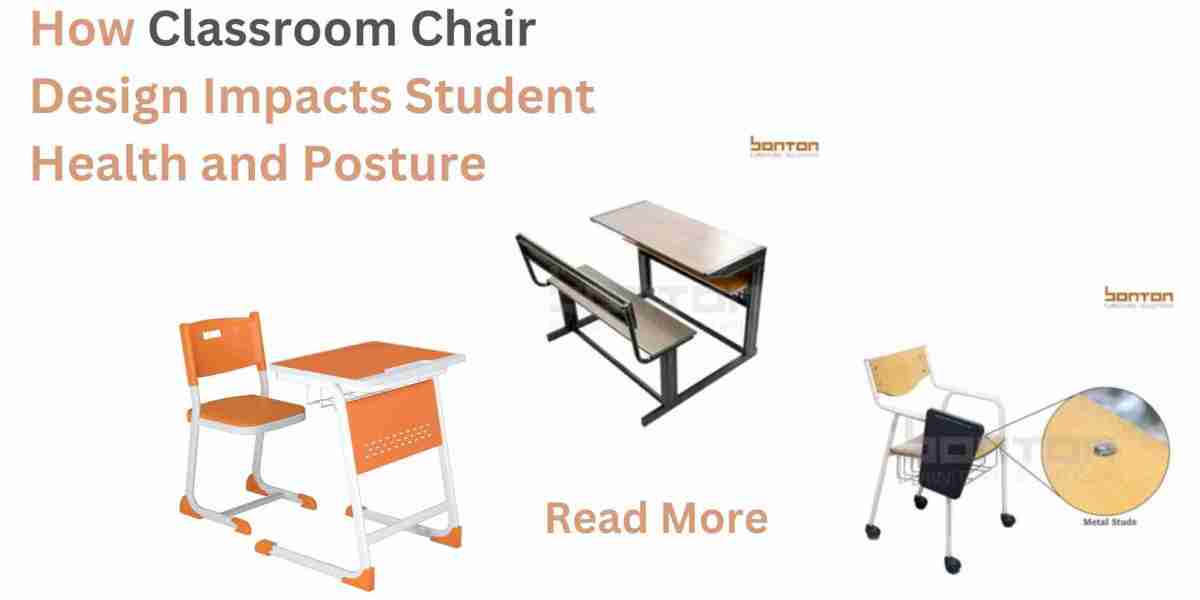Introduction:
The Importance of Classroom Chair Design in Education
When we think about creating an effective learning environment, factors like curriculum, teaching methods, and technology often take center stage. However, one critical element that is frequently overlooked is classroom chair design. The chairs students sit on play a pivotal role in their overall educational experience, influencing not only their comfort but also their health, posture, and even academic performance.
Understanding the Connection Between Chair Design and Posture
In today’s fast-paced educational landscape, where students spend hours seated in classrooms, the design of classroom chairs can make or break their ability to focus, engage, and retain information. Poorly designed chairs can lead to discomfort, fatigue, and long-term health issues like back pain, neck strain, and poor posture. On the other hand, ergonomically designed chairs can promote better sitting habits, enhance concentration, and support physical well-being.
But why is classroom chair design so important in education? For starters, students spend an average of 4–6 hours per day sitting in classrooms. Over time, improper seating can lead to musculoskeletal problems, which not only affect their health but also their ability to participate actively in class. Moreover, uncomfortable seating can distract students, reducing their attention span and hindering their learning potential.
Ergonomic classroom chairs are designed to support the natural curvature of the spine, encourage proper posture, and reduce physical strain. Features like adjustable heights, lumbar support, and cushioned seating can make a significant difference in how students feel and perform. When students are comfortable, they are more likely to stay engaged, participate in discussions, and absorb information effectively.
Furthermore, the importance of classroom chair design extends beyond physical health. It also impacts the psychological well-being of students. A well-designed chair can create a sense of belonging and comfort, fostering a positive learning environment. On the contrary, uncomfortable seating can lead to frustration and disengagement, ultimately affecting their academic outcomes.
Classroom chair design is not just about furniture — it’s about creating an environment that supports the holistic development of students. By investing in ergonomic and thoughtfully designed chairs, schools can promote better health, improve posture, and enhance the overall learning experience. After all, when students are comfortable, they are better equipped to focus, learn, and thrive.
This focus on classroom chair design is a small but impactful step toward building a healthier, more productive educational environment. So, the next time you step into a classroom, take a moment to consider the chairs — because they hold the key to unlocking student potential.
The Role of Proper Seating in Enhancing Academic Performance
When it comes to boosting academic performance, most discussions revolve around teaching methods, study habits, and access to resources. However, one often underestimated factor is the role of proper seating in the classroom. The chairs students sit on daily can significantly influence their ability to learn, focus, and perform academically.
Research has shown that comfortable and ergonomically designed seating can have a direct impact on students’ cognitive functions, physical health, and overall engagement in the classroom. Here’s how proper seating plays a crucial role in enhancing academic performance:
1. Improved Focus and Concentration
Uncomfortable seating can be a major distraction for students. Chairs that are too hard, too small, or lack proper support can cause discomfort, leading to constant fidgeting and an inability to concentrate. On the other hand, ergonomic chairs designed to fit the body’s natural posture help students stay comfortable for longer periods, allowing them to focus on lessons and participate actively in class discussions.
2. Better Posture, Better Learning
Poor seating can lead to slouching, which not only affects physical health but also reduces lung capacity and blood flow to the brain. This can result in fatigue and decreased mental alertness. Properly designed chairs encourage good posture by supporting the spine and aligning the body correctly. When students sit upright, they breathe better, stay more alert, and are better equipped to absorb and retain information.
3. Reduced Physical Discomfort and Fatigue
Sitting for long hours on poorly designed chairs can cause back pain, neck strain, and muscle stiffness. These physical discomforts can make it difficult for students to concentrate and perform well academically. Ergonomic seating with features like lumbar support, padded seats, and adjustable heights can minimize these issues, ensuring students remain comfortable and energized throughout the school day.
4. Enhanced Engagement and Participation
When students are physically comfortable, they are more likely to engage in classroom activities. Proper seating can create a positive learning environment where students feel supported and ready to participate. This increased engagement leads to better interaction with teachers and peers, fostering a more dynamic and productive learning experience.
5. Long-Term Health Benefits
Investing in proper seating isn’t just about immediate academic gains — it’s also about promoting long-term health. Poor posture and uncomfortable seating during school years can lead to chronic musculoskeletal problems later in life. By providing ergonomic chairs, schools can help students develop healthy sitting habits that benefit them well beyond the classroom.
6. Psychological Impact on Learning
The design and quality of classroom furniture can also influence students’ psychological well-being. Comfortable and aesthetically pleasing seating can create a sense of pride and ownership in the learning environment. When students feel valued and cared for, they are more motivated to learn and perform better academically.
Long-Term Health Consequences
Sitting in poorly designed chairs for long hours can cause:
? Chronic back and neck pain
? Poor circulation and numbness
? Increased risk of musculoskeletal disorders (MSDs)
To prevent these issues, schools should invest in adjustable, well-padded, and properly angled chairs that promote healthy spinal alignment.
Features of an Ideal Classroom Chair
Schools should consider the following key features when selecting classroom chairs:
✔ Ergonomic Design
Chairs should support the natural “S” curve of the spine to prevent slouching.
✔ Adjustable Height
Seats should be adjustable to match different student heights, ensuring feet rest flat on the floor for proper posture.
✔ Proper Seat Depth and Padding
A well-cushioned seat with appropriate depth prevents pressure on the back of the thighs, promoting blood circulation.
✔ Lightweight & Durable Materials
Chairs should be made from high-quality, durable materials that are easy to move and maintain.
✔ Tilt & Flexibility
A slightly tilted backrest and flexible seating allow natural movement, reducing strain on the spine.
Why Schools Should Invest in Ergonomic Classroom Chairs
Switching to ergonomic classroom chairs is not just a luxury — it’s a necessity. Benefits include:
? Healthier students with better posture and fewer musculoskeletal issues
? Enhanced focus and productivity in the classroom
? Lower absenteeism due to fewer complaints of discomfort and pain
? Long-term cost savings by reducing the need for medical interventions related to bad posture
Schools investing in proper classroom seating solutions set students up for success, both academically and health-wise.
Conclusion: Investing in Quality Classroom Chairs is an Investment in Student Health and Academic Success
The importance of quality classroom chairs cannot be overstated. As a fundamental component of the learning environment, they play a critical role in supporting students’ physical health, comfort, and focus. Ergonomically designed chairs help prevent posture-related issues, reduce fatigue, and promote better concentration, all of which are essential for academic success. By prioritizing the investment in high-quality classroom furniture, schools demonstrate a commitment to the well-being and long-term development of their students. Ultimately, this investment not only enhances the learning experience but also fosters a healthier, more productive, and engaged student body, paving the way for better educational outcomes.






